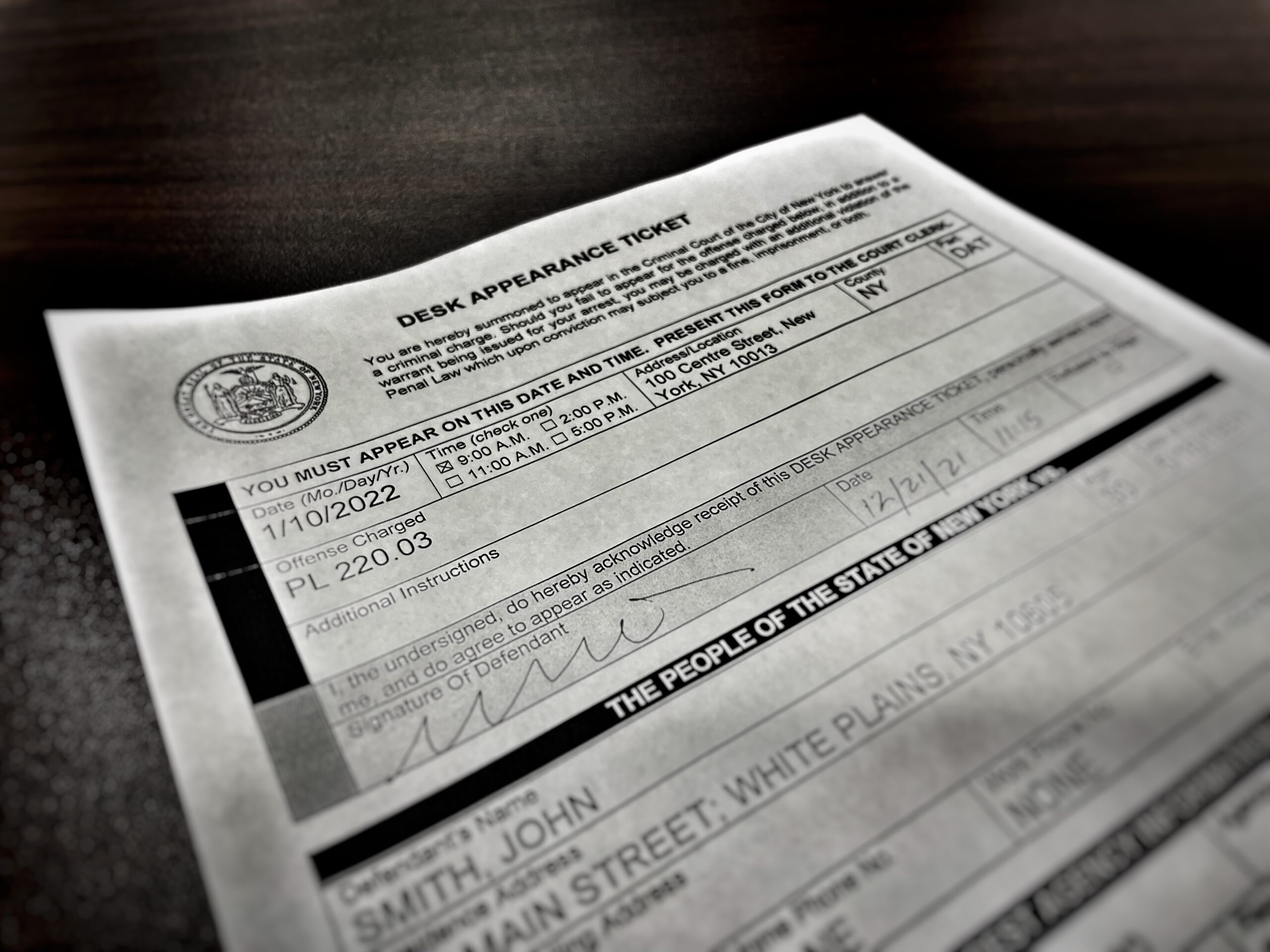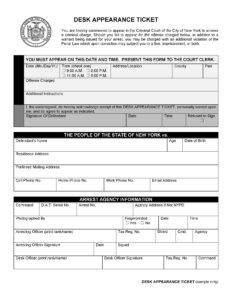How Desk Appearance Tickets Really Work in New York
Sometimes, when you’re alleged to have committed a crime, you’re not always taken into custody. In these cases, cops don’t use handcuffs and jail cells – they issue a Desk Appearance Ticket. We’ve previously blogged about Desk Appearance Tickets, yet there continues to be confusion about when police issue them rather than use traditional arrest procedures.
What is a Desk Appearance Ticket?
A Desk Appearance Ticket is a piece of paper or ticket issued by a police officer. It tells you when and where to appear in court to answer to a criminal charge. A Desk Appearance Ticket is also called a DAT, an appearance ticket, or a criminal summons.
Sample Desk Appearance Ticket used in New York City.
For example, let’s say you’re driving your car during rush hour. When going through a busy intersection, a pedestrian enters the crosswalk. Unfortunately, you accidentally clip the pedestrian with your rear bumper. In a panic, you continue to drive before pulling over to call the police. Unfortunately, the pedestrian was seriously injured. After speaking with police, you are with Leaving the Scene of an Accident (VTL § 600(2)(a)), an E felony. For such a charge, the police cannot put you into custody. Rather, they must issue you a Desk Appearance Ticket for you to appear in court on a later date.
When Will a Desk Appearance Ticket Be Issued?
According to the Criminal Procedure Law, a Desk Appearance Ticket must be issued in certain cases. The officer has no discretion but to release the defendant with the notice to appear in court on a future date.
Which cases does this apply to? With certain exceptions as detailed below, a Desk Appearance Ticket must be issued if the defendant is being charged with a misdemeanor or an E felony. If an arrest warrant has been issued, however, the defendant can be taken into custody even if charged with a misdemeanor or E felony.
Note that even if held for an arraignment, that doesn’t mean a defendant must post bail. Those charged with most misdemeanors, non-violent felonies, and a several other offenses must be released on their own recognizance unless the court finds that the person poses a risk of flight to avoid prosecution.
When Will a Defendant Be Taken Into Custody?
As indicated above, there are several exceptions to the mandatory issuance of a Desk Appearance Ticket. For example, certain E felonies will result in a custodial arrest. This includes:
- Rape in the Third Degree
- Criminal Sexual Act in the Third Degree
- Escape in the Second Degree
- Absconding from Temporary Release in the First Degree
- Absconding From a Community Treatment Facility
- Bail Jumping in the Second Degree
If a defendant is being charged with any A, B, C, or D felony, the officer will put the defendant in custody pending arraignment. There are several other situations which will result in a custodial arrest. This includes:
- The defendant has warrants
- Police are unable to identify the defendant
- The defendant has failed to appear in court in the last 2 years
- To issue an Order of Protection
- Crimes of domestic violence
- Sex offenses
- To suspend/revoke the defendant’s driver’s license
There is also an exception for cases where the defendant seems in need of immediate medical or mental health care. In such a case, the officer must first make an effort to assist that person in getting services. But if that can’t be accomplished, police may make the custodial arrest so that the courts can get involved in providing such referrals.
References:
- Criminal Procedure Law Article 150, “The Appearance Ticket.” Available at: https://www.nysenate.gov/legislation/laws/CPL/A150 (last accessed Dec. 22, 2021).
- New York Courts, “New York City Criminal Court.” Available at: http://ww2.nycourts.gov/courts/nyc/criminal/index.shtml (last accessed Dec. 22, 2021).
Image: copyright 2021 Pappalardo & Pappalardo, LLP. All rights reserved.


